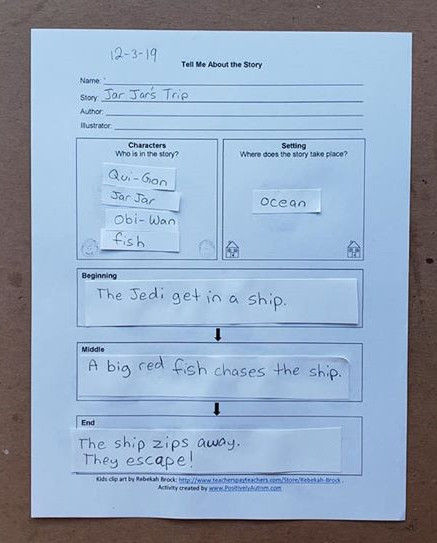Using Story Maps for Reading Comprehension
- Dr. Nicole Caldwell
- Dec 10, 2019
- 2 min read
A story map is a visual organization strategy that utilizes a diagram to show the characters, settings, and sequence of events in a story (Li, 2007). This diagram contains important elements of a story, such as main characters, settings, events, problems, and resolutions/conclusions. Using story maps can help remind students of different components of stories and how they work together (Hennes, Büyüknarci, Rietz, & Grünke, 2015). I use graphic organizers to help students practice identifying characters and settings, sequence story events, etc. You can also use them to help students create an outline/plan for writing their own stories. You can use a story map with almost any story, so it's great because you can choose stories to read that are about your child or student's interests.
Years ago, I bought this set of Star Wars phonics readers, and it's been one of my most frequently used teaching resources. Recently, I've been working with one of my students by reading one of the stories, watching a video clip of that scene in the movie, then completing the story map. This is a basic story map, as it just uses terms like "beginning, middle, end" and/or "first, next, last" rather than words like "introduction, problem, resolution, etc."
For this student, I had him glue on the words and sentences that I'd written out in advance. For other students who've had more practice with these concepts, they could write their own. Another option is to have students glue pictures in the boxes if they aren't ready to use words.


You can download the story map free here: http://www.positivelyautism.com/downloads/StoryMap_Final.pdf As a note, before we started working on story maps, we discussed what characters and settings were and did some sorting activities where we sorted Star Wars characters and Star Wars settings.

More Graphic Organizers for Reading Comprehension
References
Li, D. (2007). Story mapping and its effects on writing fluency and word diversity of students with learning disabilities. Learning Disabilities: A Contemporary Journal, 5(1), 77-93. Hennes, A., Büyüknarci, Ö., Rietz, C., & Grünke, M. (2015). Helping children with specific learning disabilities to improve their narrative writing competence by teaching them to use the story maps strategy. Insights on Learning Disabilities, 12(1), 35- 56.





























Comments